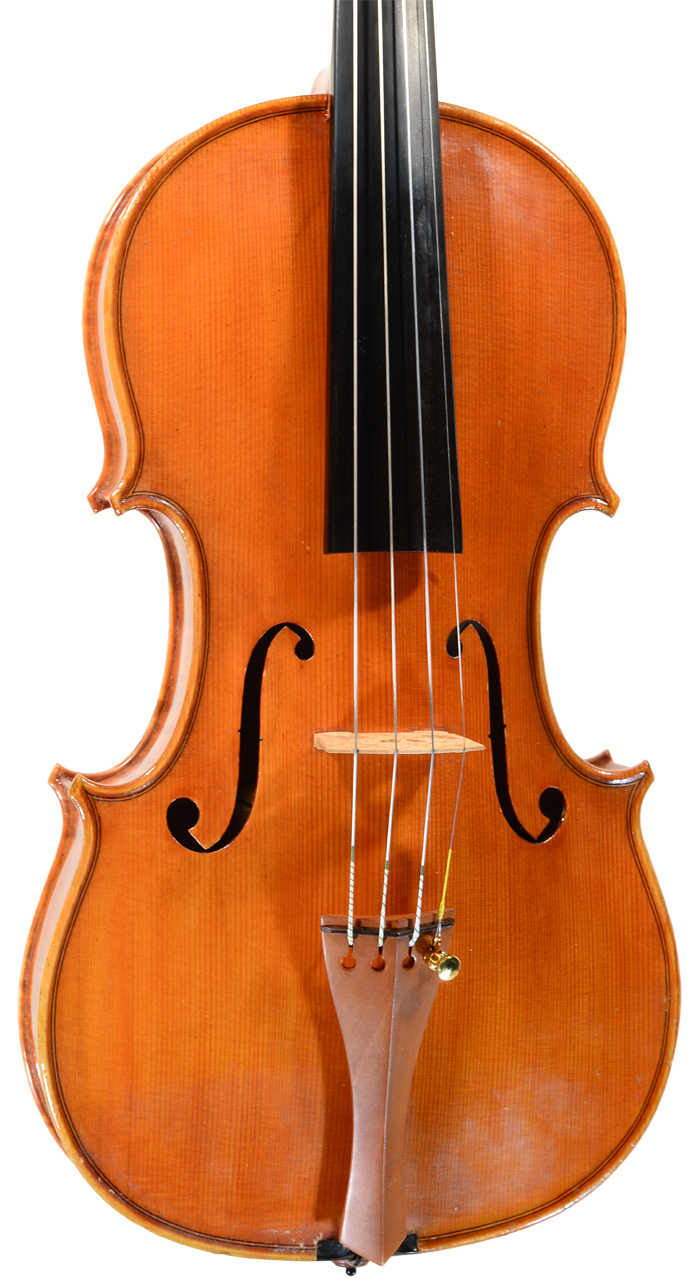|
 Gio. Batta Morassi has recently passed away in February 2018.
Gio. Batta Morassi has recently passed away in February 2018.
He was respected not only by the violin makers, dealers, musicians and collectors from around the world but also by the city of Cremona.
Morassi was born in 1934 in a village with a population of just 2,000, called Arta Terme located in north-east Italy. Although he experienced some tough times during the World War II with the Nazis being close by, he enjoyed his childhood being in the nature, commuting to school on his skis or hunting for chamois, deer and fox.
With a bursary from the local government, Morassi moved to Cremona in 1950 to study at the Violin Making School, where he met Renato Scrollavezza as his classmate.
 After graduating in 1955, Morassi went to Milan to work at the workshops of Ferdinando Garimberti and Giuseppe Ornati, but two years later, he returned to his alma mater to become an assistant to Pietro Sgarabotto and went onto open his own workshop in 1959.
After graduating in 1955, Morassi went to Milan to work at the workshops of Ferdinando Garimberti and Giuseppe Ornati, but two years later, he returned to his alma mater to become an assistant to Pietro Sgarabotto and went onto open his own workshop in 1959.
The instrument I am introducing here, made in 1962, is in Sgarabotto's style as it was from when Morassi was still working as his assistant.
 As Morassi did not yet have much money at this time, the materials used are not the finest of its kind, but the back illustrates his unique style in choosing his materials. The front is of a fine quality, but the the grains are so thin that the balance with its thickness is not great, resulting in an inflexibility in the sound. Although he was still in his experimental phase and the varnish too hard, his woodwork and knife-work techniques were already impeccable.
As Morassi did not yet have much money at this time, the materials used are not the finest of its kind, but the back illustrates his unique style in choosing his materials. The front is of a fine quality, but the the grains are so thin that the balance with its thickness is not great, resulting in an inflexibility in the sound. Although he was still in his experimental phase and the varnish too hard, his woodwork and knife-work techniques were already impeccable.
While continuing his research on varnish and types of wood, Morassi became Maestro Liutaio in 1971 at the Violin Making School, where he continued to teach until 1983. This period was to be considered his golden age when Morassi has succeeded in establishing his own individual style, producing many works of the finest quality. He was also well known for his quick but efficient work as he was making two fine instruments within a month.
Another instrument being introduced here is from 1975 during his golden period. Using the perfect thickness of the finest quality of wood and making a well balanced arch, its workmanship is sharp while its fine varnish beautifully soft. This instrument can be said to be flawless.
Even in his later years, his success in the 70's did not stop him from continuing to make each of his instrument himself with great care and producing works at a high level. Works from this period not only embodies his emotional stability, but produce much warmth in the sound quality.
In 2004, he retired from his workshop, which was carried on by his son, but continued to make instruments at home.
Instruments from this period still illustrated his individual style and his never deteriorating techniques.
The instrument made in 2006, introduced here, is one of his last works and although it lacks the energy and sharpness compared to the ones from his golden period, one can feel his maturity and sophistication from the instrument.
On 27 February 2018, Gio. Batta Morassi drew his last breath.
The development and the success of the Violin Making School in Cremona has greatly been contributed by Morassi's long years of devotion in research and education and his true passion in violin making, which earned him the well deserved respect from many. Receiving ten gold medals for his instruments at international violin making competitions, Morassi has made a name for himself as one of the finest makers of the late 20th century.
Lastly, I would like to express my deepest gratitude to late Gio. Batta Morassi. My first visit to Morassi's workshop was at the age of 23, when I acquired my first ever instrument made by his apprentice.
Despite the fact that I was just a young Japanese guy, a complete stranger to him, suddenly turning up at his workshop, Morassi took the time to teach me many things with kindness and passion. May you rest in peace.
Large Fine Violins
Hiroshi Shimizu
| |

